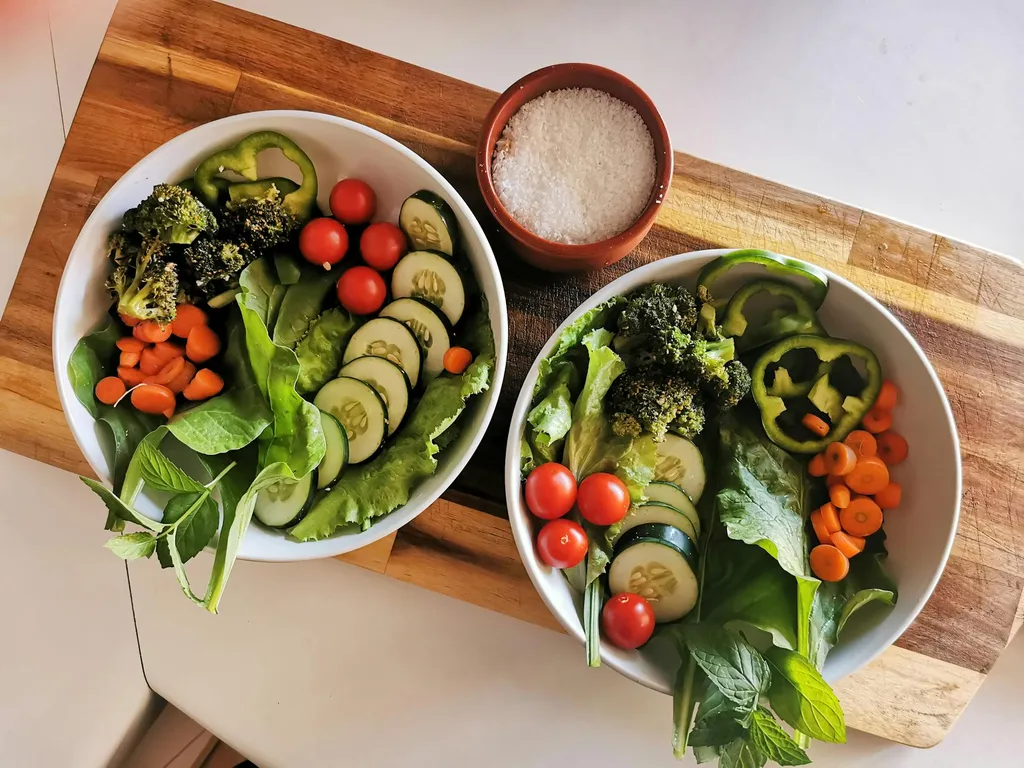Intermittent Fasting vs. Calorie Restriction, Small Meals, and Calorie Deficit: Which Is Best?

Julia Hochmann is a dedicated champion of women's health and wellness. As Fasty’s biggest supporter,...

With Fastic, millions of people have achieved their desired weight, overcome disease and regained their quality of life.
Are you among the 45% of people trying to lose weight? If so, you might have encountered intermittent fasting while investigating weight loss methods, but you likely also discovered the existence of other weight loss approaches. Now, you face a crucial question: which approach is the best (and healthiest) for losing weight? And even if you find the answer, is it truly the right one for you?
With numerous weight loss techniques available, we will explore three of the most popular dietary strategies: calorie deficit, small meals, and caloric restriction, and compare them to intermittent fasting.
First of All: What Is Intermittent Fasting?
Intermittent fasting is a dietary approach in which eating and fasting periods are alternated during a 24-hour lapse. Intermittent fasting is based on the timing of meals, rather than food restrictions or calorie intake limitations. Scientific research has proven that syncing your fast to your natural circadian rhythms promotes wellness and enhances fasting effects. Take advantage of the Fastic app to optimize fasting effects by ensuring your fasting regimen stays in sync with your circadian rhythm. Set personalized reminders that adjust to your daily routine and follow your desired eating window.
Intermittent fasting offers various methods ranging in fasting times as short as 4 hours or as long as 24 hours. Among the most popular methods of intermittent fasting are:
Time-restricted eating: Limiting food intake to specific hours during the day or night, such as the 20:4, 16:8, and 14:10 methods.
5:2 diet: Eating normally for five days and restricting calorie intake to 500-600 calories on two non-consecutive days.
Alternate day fasting: Alternating between days of normal eating and days of significant calorie restriction or complete fasting (no food consumption).
Health Benefits of Intermittent Fasting
Alternating your body’s eating and fasting times switches on its “survival mode”. And with it, various physiological processes are promoted, including:
reduced inflammation
boost in metabolism
enhanced cellular health (autophagy)
reduced risk of heart disease
Potential Drawbacks of Intermittent Fasting
Understandably, you might experience headaches during fasting. Intermittent fasting can also lead to other side effects, including:
dizziness and lightheadedness
fatigue or low energy levels
indigestion, nausea, and diarrhea
Intermittent Fasting vs. Calorie Deficit
Calorie deficit consists of a short-term strategy of consuming fewer calories than you burn. A calorie deficit diet forces the body to use stored fat for energy, potentially leading to weight loss. It can be achieved by reducing calorie intake, increasing activity levels (exercising), or both.
Health Benefits of a Calorie Deficit Diet
A calorie deficit diet focuses primarily on weight loss, however, it can encourage other health benefits, such as:
reduce high blood pressure
lower the risk of type 2 diabetes and osteoporosis
improve insulin sensitivity
increase longevity
reduce inflammation
Potential Drawbacks of a Calorie Deficit Diet
With positives, there are also negatives. Reducing daily calorie consumption during a calorie deficit can seriously impact the body.
The potential risks of a calorie deficit diet are:
nutrient deficiencies leading to anemia
loss of muscle mass
lower aerobic capacity (the body’s ability to efficiently use oxygen)
Intermittent Fasting vs. Calorie Deficit: A Comparison
While intermittent fasting makes meal planning easier by timing eating windows, a calorie-deficit diet offers more versatility in meal frequency. Intermittent fasting is ideal for those who prefer a structured eating schedule, have strong self-discipline, and can manage hunger during fasting periods. Calorie deficit, on the other hand, is better suited for those seeking a more consistent energy intake during the day or find it challenging to manage hunger for long periods.

Intermittent Fasting vs. Small Meals
Small meals involve eating various times a day to sustain steady energy levels throughout the day and help control hunger. A diet based on small meals focuses on constant, balanced intake preventing overeating.
How many meals do you eat during a small-meal diet? Usually, the number of meals ranges from 6 to 10, however, the exact number of meals may vary depending on dietary needs, lifestyle, and individual preferences. The Fastic app effortlessly tracks your meal count, helping you stay within your desired number of meals. With Fastic, you get timely reminders of your personally crafted meal schedule to adhere to your daily meal plan with ease.
Health Benefits of Eating Small Meals
Apart from providing structure to your day through frequent meals, consuming small meals throughout the day also offers the following health benefits:
sufficient nutrient intake
improves digestion
stabilizes blood sugar levels
reduces possible energy crashes
Potential Drawbacks of Eating Small Meals
Adapting to multiple meals throughout the day is the most obvious way following a small meal diet can affect your routine. Aside from this, other potential downsides of eating small meals are:
possible weight gain
requires more time planning, cooking, and eating
Intermittent Fasting vs. Small Meals: A Comparison
Eating small meals throughout the day is better for individuals looking to maintain steady energy during the day and prevent overeating. Additionally, people with busy schedules may find eating smaller meals more adaptable to their routine. Different from small meals, intermittent fasting can be better suited for individuals who want a more strict regimen and a simpler meal-planning approach. Moreover, it appeals to those looking for flexibility in food choices during designated eating windows, rather than adhering to specific meal times.
Intermittent Fasting vs. Calorie Restriction
Caloric restriction involves reducing daily calorie intake below what is typical (without malnutrition). Calorie restriction lowers glucose levels and raises ketone levels (promoting fat burning).
How many calories should you reduce in a calorie restriction diet? Typical calorie restriction ranges from 20 to 50%, but there is no specific percentage that must be strictly followed. This approach triggers several biological mechanisms due to decreased overall energy expenditure and resting metabolic rate.
Health Benefits of Caloric Restriction
Apart from activating biological pathways important for good health, calorie restriction also offers the following key benefits:
weight loss
delays the progression of age-related diseases
reduces inflammation
Potential Drawbacks of Caloric Restriction
Extreme or obsessive calorie counting may lead to the development of eating disorders. Other ways calorie restriction may impact your well-being are:
cause nutrient deficiencies
develop gallstones
insufficient energy for everyday activities
Intermittent Fasting vs. Calorie Restriction: A Comparison
Intermittent fasting may be easier to adhere to due to its flexible eating windows and null calorie restriction. Caloric restriction demands constant and strict calorie monitoring and counting, meaning it may take more time (and energy) to not only keep track of your calorie intake, but also prepare meals that stay within daily calorie limitations. Intermittent fasting imposes no food limitations, making it easier to avoid nutrient deficiencies. In contrast, calorie restriction allows more consistent control over daily calorie consumption, enabling a more predictable weight loss trajectory.
How To Reduce Daily Calorie Intake?
Reducing calorie intake, no matter what approach you go for, can be achieved in various ways. You don’t have to follow all of them; just choose the one that best fits your routine and, most importantly, your body.
Use smaller utensils and dishes to control portion sizes.
Plan your meals and snacks ahead of time to avoid impulsive eating. Schedule your meals to avoid overeating when hunger creeps up on you.
Drink water before meals to help control hunger and reduce calorie intake. Excellent fasting-friendly drinks are cucumber and lemon water.
Follow a nutrient-dense diet to ensure adequate nutrient intake during meal times.
Limit processed foods that contain hidden sugars and fats.
Avoid drinks high in sugar, opt for zero-calorie drinks.
Cook at home! Nothing guarantees a nutrient-rich meal more than cooking at home.
Practice mindful eating by eating slowly to be more aware of fullness cues.
Your Body Is the Final Judge
In summary, there is no definitive answer when it comes to intermittent fasting vs. calorie restriction, maintaining a deficit, or eating small meals. The best dietary strategy for you depends on your goals, what you are willing to risk along the way, and how your body reacts to it. Regardless of the dietary approach you opt for, by downloading the Fastic app you can track your weight loss, choose from a healthy, easy-prep meal menu, utilize its AI-powered calorie tracker to enhance your experience, and more.
Weigh out the pros and cons of each method, and give them a try. But remember, always listen to your body!
Disclaimer: It is advised to speak with a health professional before beginning intermittent fasting or a diet program. There may be side effects for people with certain medical conditions.
With Fastic, millions of people have achieved their desired weight, overcome disease and regained their quality of life.
Take the Quiz